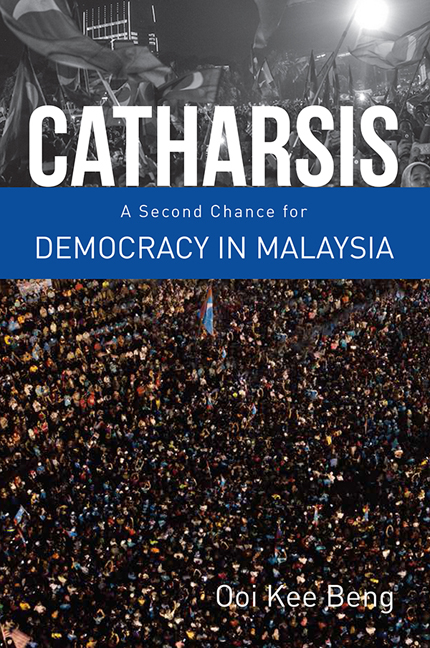Book contents
- Frontmatter
- Contents
- Foreword
- 1 Introduction – Malaysia's Future Is Redeemed
- Before Pakatan Harapan
- Before 9 May 2018
- With Mahathir at the Helm
- Beyond 9 May 2018
- 47 The Bewildering Game of Malaysian Politics, the Rot Within the Barisan Nasional
- 48 A Revolution in Malaysia? Not So Fast…
- 49 Mahathir: Renaissance Man
- 50 Malaysia's Reformasi Movement Lives Up To Its Name
- 51 In Lieu of Race and Religion
- 52 It All Seems So Simple Now…
- 53 Catharsis – The Rebirth of Malaysia Finally Begins
- 54 A Malaysian Spring for Intelligentsia?
- 55 The Layers of Historical Significance of GE14
- About the Author
50 - Malaysia's Reformasi Movement Lives Up To Its Name
from Beyond 9 May 2018
Published online by Cambridge University Press: 12 February 2019
- Frontmatter
- Contents
- Foreword
- 1 Introduction – Malaysia's Future Is Redeemed
- Before Pakatan Harapan
- Before 9 May 2018
- With Mahathir at the Helm
- Beyond 9 May 2018
- 47 The Bewildering Game of Malaysian Politics, the Rot Within the Barisan Nasional
- 48 A Revolution in Malaysia? Not So Fast…
- 49 Mahathir: Renaissance Man
- 50 Malaysia's Reformasi Movement Lives Up To Its Name
- 51 In Lieu of Race and Religion
- 52 It All Seems So Simple Now…
- 53 Catharsis – The Rebirth of Malaysia Finally Begins
- 54 A Malaysian Spring for Intelligentsia?
- 55 The Layers of Historical Significance of GE14
- About the Author
Summary
A Silent and Peaceful Revolution
A revolution took place in Malaysia on 9 May 2018. It was a silent and peaceful one, amazingly achieved through the ballot box and is therefore not noticed for what it is. But it is a revolution nevertheless and the effects of it are moving like a strong undercurrent throughout the nation – cutting down old structures, be these mental ones, social ones or political ones. A sense of jubilation and disorientation now permeates the country and will do so for a few weeks yet, if not months.
For people in the states of Penang and Selangor, which had been governed by federal opposition parties for the last ten years, the sudden change whereby the federal power is now an intimately friendly one is dizzily baffling. From being necessarily defensive, strategic and reactive in all they did to parry an antagonistic central power, they now have the weird opportunity to dream big. It will take a while before they can do that with gusto and confidence. Their old habits will die hard. Some hesitation is to be expected, along with much resentment against those who had supported the fallen government so unconscionably. Some frames of thought will appear clearly outdated, and when expressed will sound revisionist or obsolete.
Economically, there is good reason to hope that the country can now live up to its potential again, that many of its migrated sons and daughters, now well trained in foreign lands, will return to help put the country back on track and that the recent fall of the ringgit will be reversed.
This toppling of a regime that had been in place since independence in 1957 occurs two decades after the country lost its ability in 1997–98 to soar with fellow Asian flying geese. And with the change in government, it is now finally able to put the lessons it learned – or should have learned – from the Asian Financial Crisis to good use.
While countries such as South Korea, Thailand and Indonesia experienced immediate regime change and institutional reforms that today have left them as unrecognisably different entities from what they were in the Roaring 90s, Malaysia came through that period with its political system intact. That was partly due to the doggedness of thenprime minister Mahathir Mohamad in rejecting external assistance and interference.
- Type
- Chapter
- Information
- CatharsisA Second Chance for Democracy in Malaysia, pp. 194 - 200Publisher: ISEAS–Yusof Ishak InstitutePrint publication year: 2018

